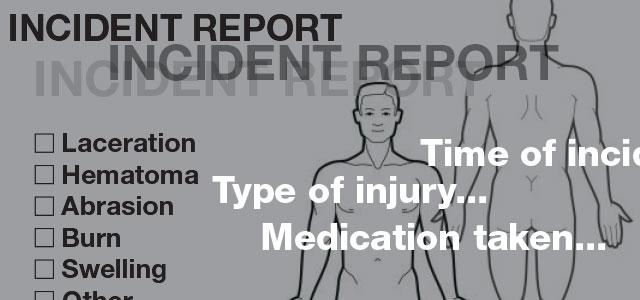
How Can We Reduce Adverse Events in Long-Term Care Settings?
Every year, nursing homes in the US report more than 8 million adverse events. Recently, the Office of Inspector General in the US Department of Health and Human Services found that approximately 22 percent of Medicare beneficiaries experienced adverse events while staying in skilled nursing homes; nearly 60 percent of those events were deemed preventable.
Abuse grabs the headlines, but falls, pressure ulcers, medication errors and infectious disease are more common and no less a cause for concern. All can spark a downward spiral from which many patients – and their families – never recover.
And at least with nursing homes, there are semireliable numbers. Assisted living facilities – or residential care facilities for elders (RCFEs), as they are known in California – have almost no required reporting, so it’s hard to tell how many adverse events occur.
“It’s a major problem,” says Patricia McGinnis of California Advocates for Nursing Home Reform (CANHR). “Most RCFEs don’t report anything, and the Department of Social Services [which oversees RCFEs] doesn’t have the ability to track.” That’s especially disturbing, she says, in that many RCFEs often lack even an on-site registered nurse, but accept residents at increased risk for adverse events due to serious health conditions.
In both of these settings, multiple factors complicate efforts to reduce adverse events.
A shortage of nurses trained to work with this complex population is one factor, since nurses deliver the overwhelming majority of care in these facilities, says gerontological nurse practitioner and researcher Laura Wagner of UC San Francisco School of Nursing.
Another, she says, is a disjointed, low-tech, underfunded reporting and oversight system that complicates on-site quality improvement (QI) efforts while making it harder for concerned staff to report events and for state and federal agencies to consistently investigate them and drive change through regulation.
 Laura Wagner “It’s indisputable that hospitals’ use of HIT [health information technology] has reduced adverse events, because of how the hospitals use data to improve care,” says Wagner, who has studied event reporting in nursing homes nationwide. “But this hasn’t translated to long-term care settings, where technology is severely limited.”
Laura Wagner “It’s indisputable that hospitals’ use of HIT [health information technology] has reduced adverse events, because of how the hospitals use data to improve care,” says Wagner, who has studied event reporting in nursing homes nationwide. “But this hasn’t translated to long-term care settings, where technology is severely limited.”
Wagner’s recent study in Geriatric Nursing found that only about 15 percent of nursing homes had computerized entry by the nurse on the unit. One-third of nursing directors conducted data analysis by hand, which, says Wagner, makes it more complicated to rigorously use the data to examine trends within the facility and zero in on areas for lasting improvement. This lack of technology use likely contributes to another finding in Wagner’s study: fear of reporting remains a significant barrier.
Addressing the Fear
For individual health care workers, worries about career consequences have long affected the degree to which they’re willing to report adverse events. “That’s why we have to set up some kind of no-fault system,” says Wagner. “The benefit of HIT is that some systems are set up to facilitate anonymous reporting and build in protections for nurses and other workers.”
At the facility level, parallel fears dampen the enthusiasm for reporting. All are supposed to report adverse events to the federal Centers for Medicare and Medicaid Services (CMS). In California, if an event causes “reasonable harm,” facilities are supposed to report it to the state Department of Public Health. The problem is that what constitutes “reasonable harm” is a judgment call, and there is a disincentive for institutions to aggressively report, because doing so affects publicly available quality ratings.
“For me, nearly any adverse event is reportable to the state,” says Craig Danby, administrator of Valley Pointe Nursing and Rehabilitation Center, a 50-bed facility in Castro Valley that is part of a chain that oversees numerous nursing homes in California. “But I may be an anomaly. Because reporting affects clinical outcomes and quality ratings, some people try not to provide all the information.”
In addition, the absence of integrated HIT complicates the state’s efforts to follow up on reports. “Facilities told me that even if they have computerized entry, they didn’t necessarily report electronically to the state,” says Wagner. Too often, she says, reports wind up filed and forgotten.
The Effect on Quality Improvement
Regardless of how facilities do regulatory reporting, Wagner believes that the absence of quality HIT in-house can undermine opportunities to improve care.
“In our study, few nursing homes were using electronic means to analyze adverse events,” she says. “More often, there’s a nurse taking a pencil, making hash marks and completing a narrative. Then a nurse manager gets a form with a check on a piece of paper and, often, there is very limited QI follow-up.”
“They’re not doing the kind of analysis that needs to be done, so they’re making the same errors again and again and again,” says McGinnis.
In contrast, in a prior study, Wagner found a nursing home that used its HIT to quickly spot a trend of falls on evening shifts. The finding changed practice to the advantage of every patient who passed through the facility.
And even if it’s just one patient at a time, HIT can make a real difference.
Take medication errors. CANHR, which has been particularly concerned about this issue, has been documenting cases where patients in nursing homes and RCFEs are inappropriately medicated and suffering adverse reactions. Yet in long-term care facilities where nurses are responsible for medication administration – and, typically, physicians are on-site only once a month – the type of electronic decision support and pop-up warnings that could make a difference are rarely there for long-term care nurses.
“We know that if nurses can quickly see [on a computer screen] there’s a need to monitor certain medication interactions for a particular patient, that’s a lot easier than sifting through 30 pieces of paper,” says Wagner.
Nevertheless, Danby says the transition to electronic reporting is not automatically a boon for QI. “In our facility, up to very recently, for every fall an incident report was filled out, handed to me, the director of nursing and the director of staff development – and we conducted research into how the fall was done, and then we came up with a care plan to keep that person safe from falling again.” Danby also tracks trends in an Excel spreadsheet. Follow-up – which he says has been quite good at Valley Pointe – involves sitting down with a QI/QA (quality improvement/quality assurance) team that, in the past, had all of the relevant paperwork in front of them.
“But with our electronic system, reports and statements are logged into the computer, and there is no paper statement,” says Danby. “Now there is just one computer screen, with five people huddled around all the information. We’re getting better at it, but we’re still figuring it out.”
 Turning Attention to RCFEs
Turning Attention to RCFEs
Despite their many challenges, nursing homes appear to be further along than assisted living facilities, which is why both Wagner and McGinnis have turned some of their attention to these settings.
In October 2013, CANHR released a white paper deploring the conditions in RCFEs. McGinnis says that many such facilities can accept people with healing wounds or who are eligible for hospice, despite lax requirements for on-site medical care. “About 80 percent of these facilities are six or fewer beds, and I would guess that an overwhelming majority of administrators don’t even know what an adverse event is.”
Despite this, Wagner sees the RCFEs as an opportunity to get things right from the outset. “Nursing homes are so regulated that many feel they don’t have the time to look at QI,” she says. “There may be more potential to do something in assisted living, because of less regulation.”
The Roads to Improvement
The challenge in both settings is figuring out how to significantly reduce adverse events. Wagner believes it begins with training, both on how to prevent the events and on how to use technology to support the efforts.
Nursing schools must of course do their part to provide gerontology training, says Wagner, but facilities have to provide some training as well, including in how to appropriately use the technology. “Long-term care nurses tend to be older, and we’ve seen some who have never dealt with computers at all before,” she says.
Government can help as well. Wagner says that the CMS’s Quality Assurance and Performance Improvement initiative provides resources for long-term care staff that include – but go well beyond – the use of HIT.
“In California,” McGinnis says, “it’s also important to train RCFE administrators, because most would not know an adverse event if they sat on it.” She adds that state regulators could use some education as well, noting that when the state was devising its key quality indicators for RCFEs, the regulators didn’t even consider adverse event reporting. Rather, she says, they focused on nonvalidated measures that borrowed from child care regulations. “They’re taking a cardboard box, covering it with icing and calling it a cake.”
Training and HIT implementation, however, require resources, a challenge for both the facilities and the regulatory agencies. The federal government has provided some level of funding for HIT in long-term care, but most facilities still struggle with the costs. Wagner’s study found that larger chains tended to do better with HIT implementation because of presumed economies of scale.
But McGinnis is not so sure the chain’s HIT advantage and resources will translate into care improvements. “That’s been the theory for years, that the chains will do better,” she says. “They haven’t.”
She says the necessary changes are most likely to emerge from tough state regulations that have real consequences for failing to report.
“The incentive needs to be a stick,” says McGinnis. “We’ve seen that with reporting of abuse. We changed the law in California, made people subject to criminal penalties if they didn’t report, and it worked. Honestly, if they did that with adverse events, if we put it in the same category as abuse and neglect, which it is, we would see change.”
Hope
Despite the headline-grabbing horror stories and the obvious challenges, Danby has seen firsthand that improvement is possible.
“Yes, there are facilities not tracking clinical data or outcomes to get better; it’s one of the most trying things in this industry, because this information is important for improving care,” he says. “But some administrators and organizations want to report. We see trends, see clinical outcomes and see how things can change.”
“There is no quick, easy solution to getting HIT in place or reducing adverse events,” says Wagner. “But there’s a huge generation of older adults worried about what the ends of their lives will be like. That type of pressure can force change for the better.”



